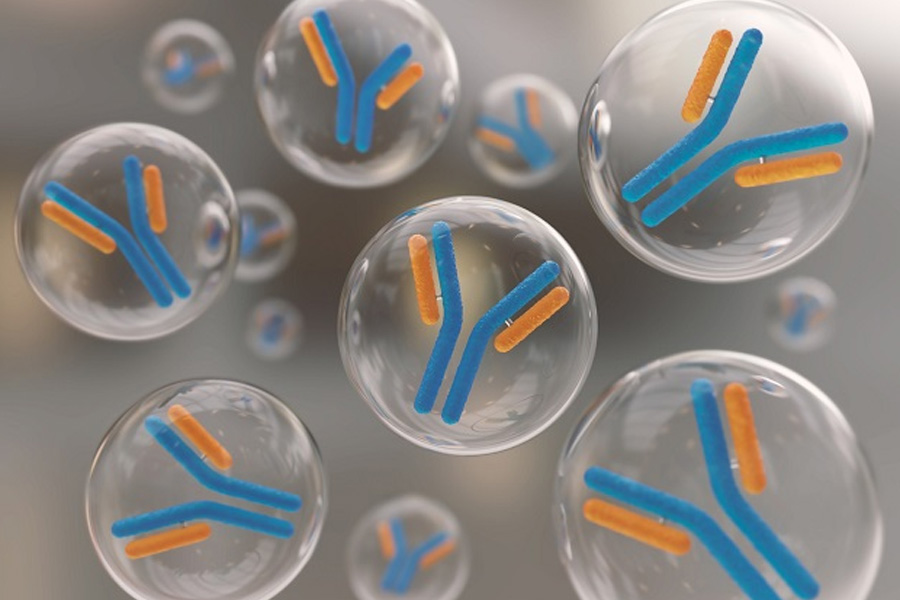By: Patent Attorneys Dr. Hadassa Waterman, Head of the Biotech Department and Dr. David Mencher, of Ehrlich & Fenster of Ehrlich Group
Current USPTO guidelines for antibody-based inventions (see “Guidelines”1) have overturned the long-standing “antibody exception” to the 112 Written Description requirement for correlation between structure and function defining the boundaries of a group (genus) of individual items (species). Previously, disclosure of “a fully characterized antigen”, defined by “structure, formula, chemical name, physical properties” or “deposit in public depository” constituted sufficient support for 112 Written Description requirement for claiming any antibody binding that antigen (“lock-and-key” definition- see Noelle v Lederman, 20042). Recent Federal Court rulings, however, have led the USPTO to eliminate the “antibody exception” to the 112, 1st Paragraph requirement for “possession of the invention” (see Abbvie v Janssen, Fed. Cir. 20143 and Amgen v Sanofi, Fed Cir 20174), in step with more than a decade of precedential decisions and USPTO policy regarding written description of nucleic acids (Fiers v Revel v Sugano, Regents of Univ of Calif v Eli Lilly & Co, Enzo Biochem, Inc v Gen-Probe, Inc. and Amgen, Inc. v Hoechst Marion Russel, Inc.). The immediate result is that the “newly characterized antigen test” is now officially irrelevant, even when antibody preparation is routine and more than one antibody has been disclosed.
What, then, constitutes a valid written description of antibodies? Structural details (i.e. amino acid sequence) of the functional portion (e.g. binding sites, paratopes) conferring binding specificity (e.g. affinity, dissociation constant), for example, complementarity-determining regions (CDRs) of the (heavy- and light-) variable chains suffice if provided for a representative number of species for the claimed genus.
Disclosure (at the time of filing) of a correlation between structural elements and the function they determine in the antibody is a powerful means for establishing a valid written description under 112, 1st Paragraph. Elucidation of the structure (e.g. by X-Ray Crystallography) of a target (e.g. antigen) binding site common to a “representative number” of antibodies or binding peptides (species) can provide evidence of “possession”, under 112, 1st Paragraph, of the group (genus) of antibodies. What is a “representative number”? Although presently undefined by court decisions, our review of the few recently issued US antibody patents indicates that detailed data correlating structure and function from no less than 5 individual members (species) of a group (genus) of antibodies is required to define the genus (group).
Additional data that could possibly support “possession of the invention” for written description of antibodies or binding peptides under 112, 1st Paragraph includes deposit of hybridomas, detailed description of the epitope of the antigen, detailed affinity kinetics and/or cross-reactivity common to the group (genus) of antibodies, and biological assays characterizing the group (genus) of antibodies.
In short, it is evident that today, in light of the new guidelines, it is critical to provide much more data, at the time of filing, in order to achieve a broad scope of protection for claims reciting antibodies either as a composition or in a process (e.g., methods of diagnosing and treating).
Although USPTO policy regarding written description under 112, 1st Paragraph now seems to have reached an extreme in its swing away from allowing claims in antibody and binding peptide inventions, experience reminds us that in the past similar “pendulum motion” of USPTO guidelines with respect to other requirements for claim validity [obviousness (USC 103), patent eligibility (USC 101)], has been followed (over time) by definition, clarification and moderation as courts review the impact of new policies.
References:
- Noelle v Lederman (Fed Cir 2004)https://casetext.com/case/noelle-v-lederman
- Abbvie v Janssen (Fed Cir 2014)https://caselaw.findlaw.com/us-federal-circuit/1671777.html
- Amgen v Sanofi (Fed Cir 2017)https://casetext.com/case/amgen-inc-v-sanofi-aventisub-llc-1
- “Clarification of Written Description Guidance For Claims Drawn to Antibodies and Status of 2008 Training Materials”, USPTO, Feb 22, 2018.
